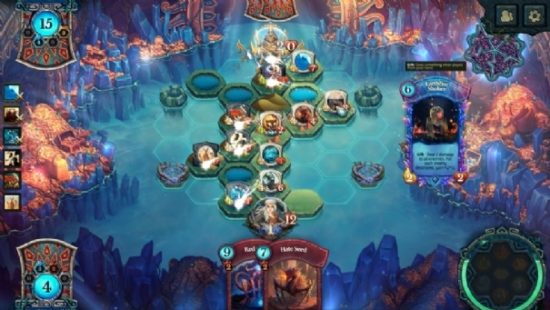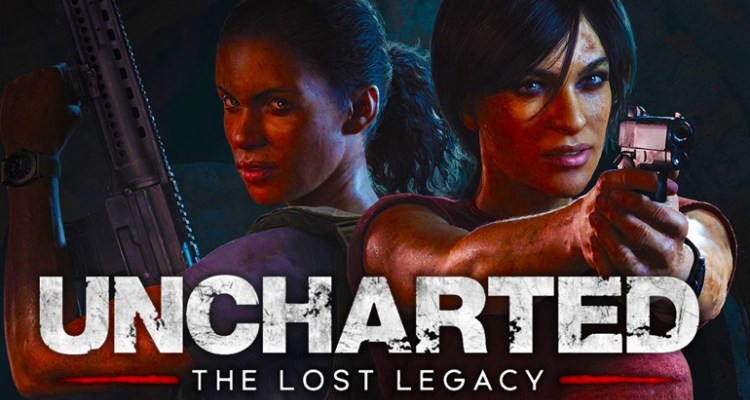It is not a single dashboard on one or more files, but a hexagram chessboard, a familiar layout for table wargamists.
The cards, the creatures that remain in play, are to be played in one of these hexagons, and they move around with the aim of nullifying the opponent’s life points. Summaries can only be made on their hexagons, but the creature in question can then move in any direction. Faeria is halfway between the classic concept of Magic: The Gathering and the table wargame in a very interesting way, because the “colors” of the decks that are being built are very important, ie the types of terrain that you will manage between your cards. The land can be neutral, water, desert, mountain, or forests.
The “colored” cards, in addition to the cost of mana (here called faeria), have a ground requirement built of a certain kind to be able to be played, and the most powerful cards of even two types of terrain. In the deckbuilding stage this is a very important element that gives a new complexity to this kind, because it brings them much closer to the already mentioned Magic. You can make two-color bats, or even more so since during the game you can build any terrain at any time.
Another strategic element, in fact, is the action that is given to the player, who can choose between: build two neutral hexes, build a colored hexagon, draw a card, get a faerie. Mana, on the other hand, is accumulated in turn in turn unlike the usual one.
The strategic variables are therefore many, and to these we add the fact that we can extract extra fable to the three that are obtained each turn. In the map there are four wells, one per corner, two by the side of the “table”, which are emptied if a unit is close to them, or if it is flanked during the turn.
The units themselves have a great variety of skills and synergies, some typical of the paper games that we find with pleasure in digital key. There are creatu
res that can fly by ignoring any obstacles, others that spin two boxes at a time, some that are aquatic and as such can move on the hexagons of water but also on the virgin soil, since the plank is placed on an ocean, in addition to the classic skills already seen and reviewed such as speed, protection from the first attack, and so on. In general, during my
gameplay, I have found so many synergic variables between so many cards, many more than they usually find in the competition. In this sense, Abrakam sees fully in the center of wanting to give a realistic alternative to the various Hearthstoneand partners in terms of gambling and strategic offerings. The deckbuilders can brag, though, as expected, there are some considerably stronger cards th
an others (and not always super rare), but this is part of the game at the bottom. Gems, gold, crafting We said that Faeria is a “normal” card game for most of its structure. This means that it is a free-to-play, and as such, the Abrakam boys would like a lot of you to bet on as many euros as possible, with distinctions.
Meanwhile there is the single player mode that helps you unlock cards, pre-packed betting lists (which finally show the average cost of launching the cards), and handbags from which to get new cards and other cosmetic items. The single-player mode also has very special levels called “puzzles” in which, even to say it, you will have to win by solving an enigma. It is more often than not to win in a single turn, or with a number of moves, starting from particular conditions. In addition to being fun to solve, they are obviously a series of goggles to the player to suggest moves, combo, or special synergies that can escape during the first matches, then used to build their bouquets and to solve particular situations in games against the players human.



